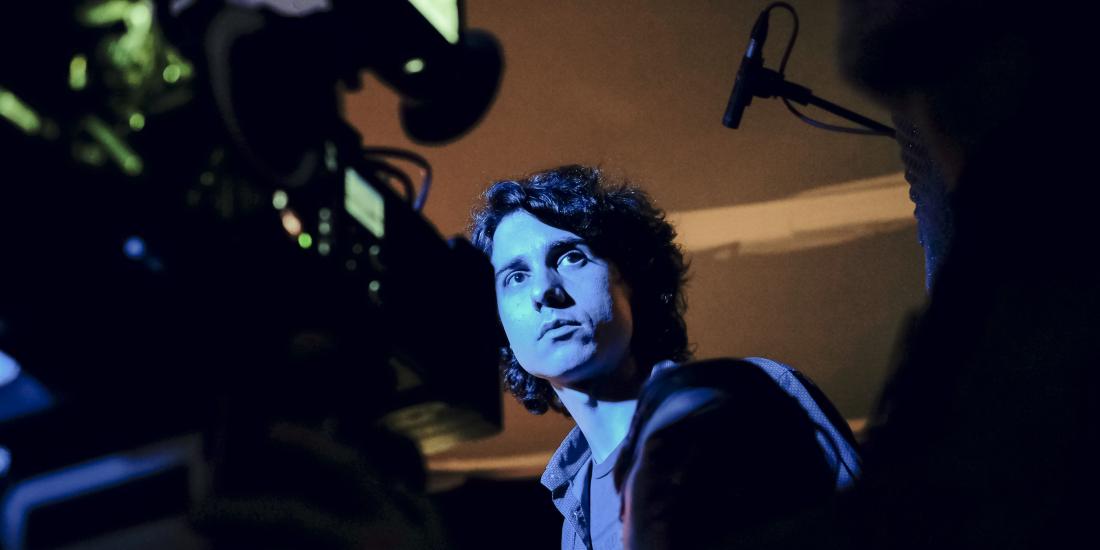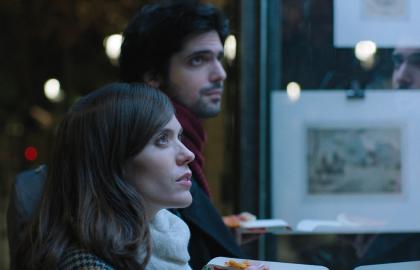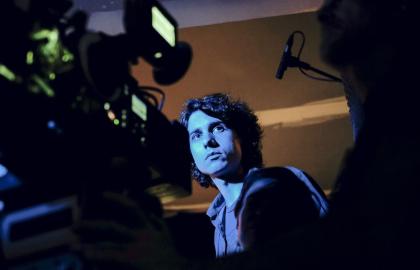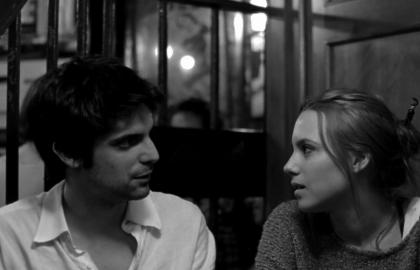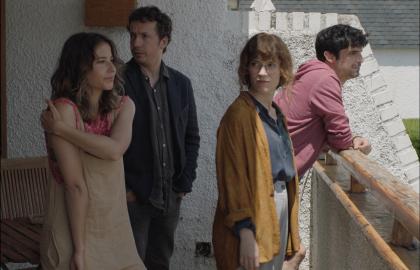For anyone moving to a new city, there is sooner or later a moment when the city becomes irrevocably intertwined with their own life. Street corners, cafés, shops, parks and even the most mundane intersections are covered in memories that tell of what happened here, what happened there. A kiss, a goodbye, a reunion... A moment of crisis or a eureka experience, perhaps sitting on this bench... When you walk through the city in this way, you're walking more in a fog of the past, in the sum of a self, than in the real tangle of asphalt, skyscrapers and occasional passers-by.
In the filmography of Spanish director Jonás Trueba, one constant immediately stands out: the city of Madrid. Trueba himself grew up in the Spanish capital, so he knows it inside out. On several occasions, he uses Madrid's many neighbourhoods as a backdrop for films that do not hesitate to tackle the major themes of human life. Friendship, love and the winding roads of memory are at the heart of Los ilusos (The Dreamers, 2013), La reconquista (The Conquest, 2016) and Tenéis que venir a verla (You Must Come and See It, 2022). Madrid, however, is not a postcard, as Trueba himself states. The city never allows itself to be completely aestheticised, unlike, for example, Vienna in Richard Linklater's Before Sunrise. According to Trueba, it is precisely because it is turbulent that the city invites you to get lost in it.
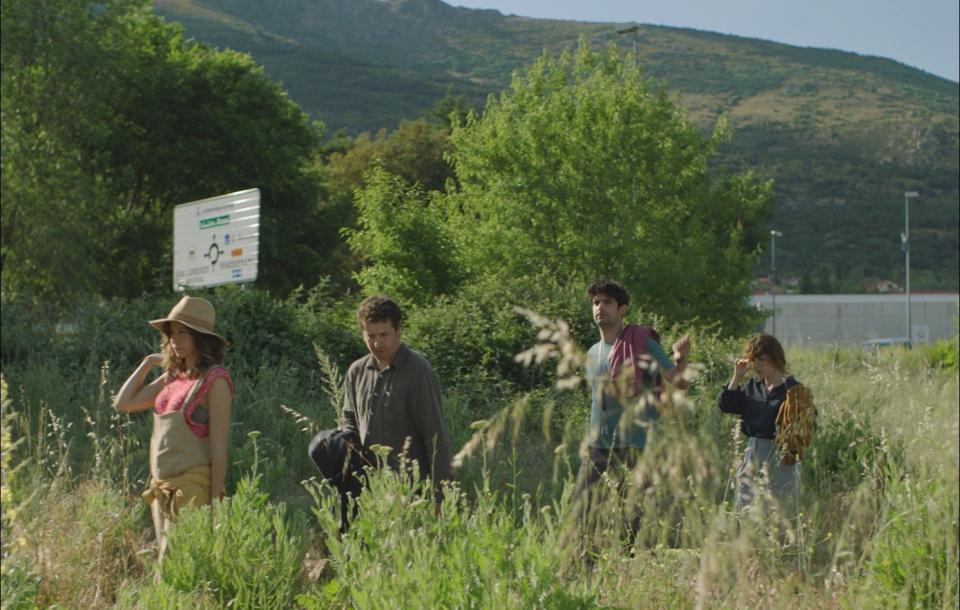
Ordinary crossroads and postcard-worthy squares
In Los ilusos, Madrid appears above all as a city whose energy permeates its smallest streets. Shot in 16mm and in black and white, the film adopts a playful, experimental style. In this way, Madrid quickly acquires the flair of Paris in the 1960s, when the nouvelle vague reigned supreme. Los ilusos constantly reminds us of its own creative process and conveys its sensations through the appearance of sound engineers in the image and actors talking about their own roles in voice-over. Here we follow twenty-eight-year-old director León and his group of filmmaker, artist and actor friends at a time when León is not working on a film. Life 'in between' takes on a charming simplicity: León reads a book on the terrace of a taberna, browses in a video library, witnesses a relationship fade and a new love ignite. He attends small-scale lounge concerts and gets drunk at the legendary San Román, Madrid's smallest bar. The next morning, León, a friend and a lover stroll along the Plaza Mayor, perhaps one of Madrid's most picture-postcard locations. Their only company is a few city pigeons, a few dustmen and two lost souls smoking a cigarette at one of the hundreds of empty tables a little further on. This seemingly simple scene is in fact highly evocative: Trueba gives visibility to Madrid's city centre without fear of subjecting it to a tourist gaze. What's more, the passage of León and his companions takes on the air of a quiet triumph: this Madrid is at least as much theirs as that of the crowds of tourists who will arrive a few hours later.
Despite its retro style and string of cinephile references, Trueba brings Los ilusos into the 21st century. In a scene that pays homage to Godard's Masculin féminin, León goes to the cinema with a date. However, when the film starts and the lovebirds are already sinking into their upholstered seats, León stands up, thinking he has detected a problem with the projection. He complains to the projectionist, who assures him that he's just playing the film on blu-ray. In a similar vein, León points out at one point that the ban on smoking in bars and restaurants is a boon for a filmmaker, who can now simply have a smoking character go outside to briefly interrupt a scene. Details like these are a welcome addition to the nostalgic tinge that Los ilusos consciously deposits on the present.
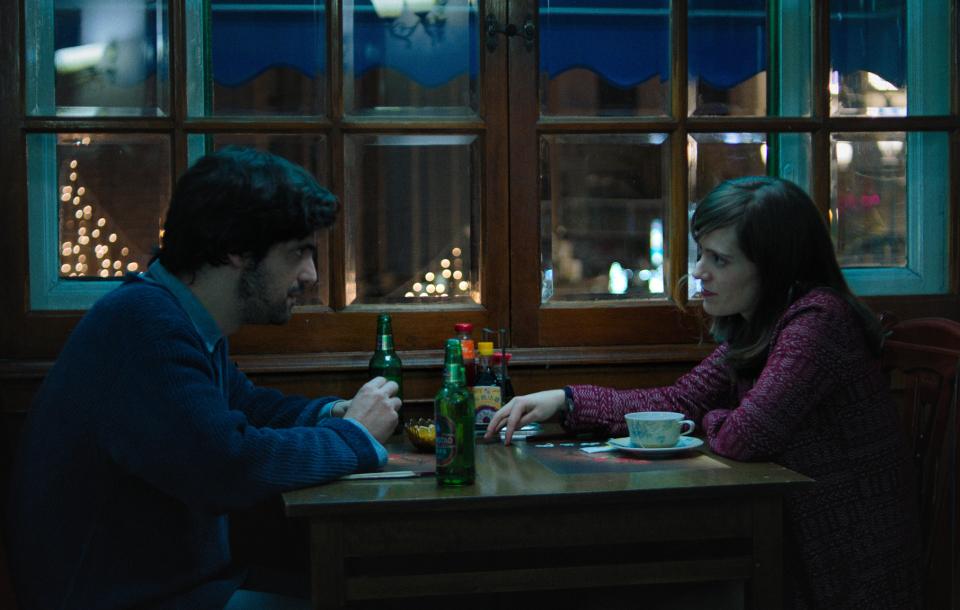
In search of lost love
In addition to the constant choice of Madrid as a filming location, there is another even more striking similarity between Trueba's films. Trueba almost always uses the same actors. Francesco Carril, who played León in Los ilusos, also plays the main character Olmo in La reconquista and, under the name Guillermo, plays one of the four roles in Tenéis que venir a verla. He is joined in various roles by actress Itsaso Arana and actor Vito Sanz, among others. Trueba could be criticised for not challenging himself enough as a filmmaker, but staying true to his locations and actors is a real challenge. The twenty-somethings of Los ilusos give way to the thirty-somethings of La reconquista and Tenéis que venir a verla, forcing Trueba to approach the themes of love and friendship from a new angle. The city is constantly changing, but so are human beings, albeit sometimes less visibly than in the roadworks and new housing estates. Whether you have a core identity or not, each new decade brings its own unique way of being.
La reconquista opens on the steps of the Cuesta de los Ciegos, which translates as ‘the slope of the blind’. These steps are located in one of Madrid's oldest neighbourhoods, close to the Segovia viaduct and just ten minutes' walk from the Royal Palace. For Olmo and Manuela, the neighbourhood seems to be the scene of an attempt to reclaim the past. When they were 15, they shared a short-lived but intense love affair that ended abruptly. On the Cuesta de los Ciegos, they meet again in their thirties, Manuela returning to Olmo a letter he had written her at the time. Olmo had forgotten about the letter, but its contents, in his own handwriting, suddenly challenge him. The two go for a drink in an Asian restaurant, reminisce about the past and make confessions about the present. Manuela has returned from Buenos Aires for a short time and is experiencing a period of debauchery in Madrid, while Olmo lives with his girlfriend Clara and shares her desire for a child.
Manuela and Olmo embody two opposing conceptions of love and sexuality that I often see around me. In a way, their relationships are entirely determined by the city, which offers both dating opportunities for single people and cheap housing options for young couples. Anyone looking into the brightly-lit windows of a high-rise building at night can only imagine the different forms of sexuality and love that take place in these rooms. However, the constant exposure to other lifestyles in the city sometimes leads to internal friction. So when Manuela finally invites Olmo to accompany her to her father's concert, a wandering begins that seems to plunge ever deeper into excess. The night progresses through long conversations, cocktails and a chance meeting that even leads them to a swing event. It's not until the early hours of the morning, when Olmo heads home on his scooter through the wide avenidas, busy crossroads and narrow streets around the Plaza de España, that the power of wandering fades. At home, Clara sleeps peacefully. When Olmo finally settles down beside her, she tells him half sleep that he stinks and had better take a shower... Olmo's day-to-day life returns abruptly when she smells alcohol and cigarettes. Once Olmo has rid himself of these smells and finally fallen asleep, a long flashback begins to the time he spent with Manuela when he was 15, from both points of view. The viewer is plunged into the past, thus reaching the end of his recapture.
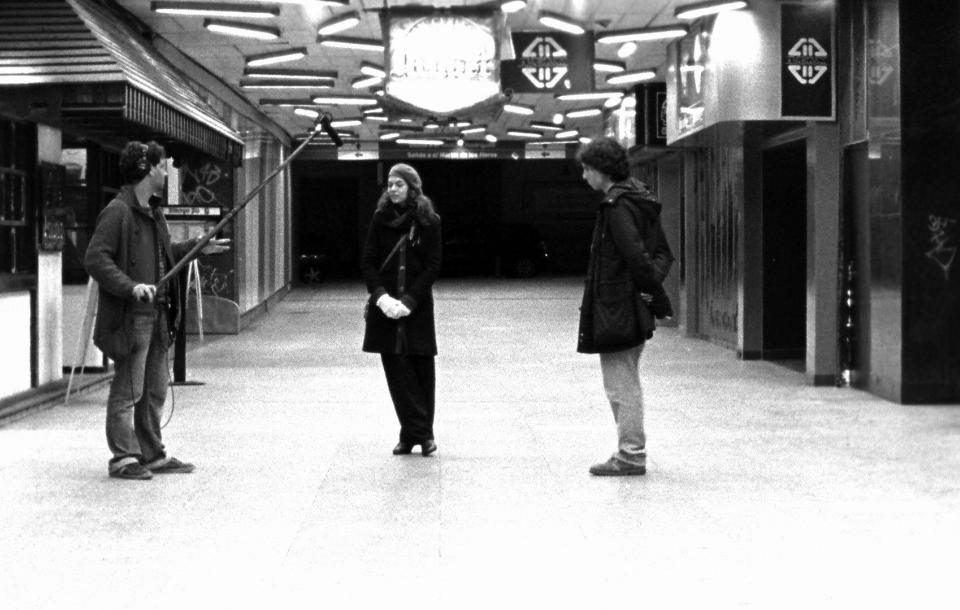
Friendship after the exodus
What the ‘thinkers of hope’ in Los ilusos may not yet realise is that, like love, friendship is also subject to the ravages of time. Carefree afternoons on the basketball court, endless weekday evenings and all manner of spontaneous adventures often have to give way, from a certain age, to a job, a relationship and eventually children. Meanwhile, the basketball court fills up with new youngsters, while the old guard have to rack their brains to plan a simple meet-up for coffee. The alienation that can occur between friends in this way forms the starting point for the hour-long film Tenéis que venir a verla. Here, two pairs of friends meet up for the first time in nine months at Madrid's Café Central, a famous jazz club. This long break from friendship is due both to the confinement and to Guillermo and Susana's move outside Madrid. ‘You really must come and see us at our house sometime’, the two ex-Madrileños keep telling Elena and Daniel, even though the conversation is sometimes awkward.
Guillermo and Susana's home is just half an hour from Madrid by cercanías, the city-region rail network. This inexpensive and accessible network links Madrid with its relatively close surroundings, which include historic sites such as Toledo and Guadalajara. On the way home, Daniel complains to Elena about Guillermo and Susana. He no longer seems to recognise himself in their sudden civility... Daniel almost takes their invitation as a provocation, as if life were better once you could afford to get away from Madrid. Once home and in bed, he launches into a laconic but sincere eulogy of Madrid: ‘I love this city... The buildings, even the ugly ones. The tarmac... The roundabouts. I like the signposts, the dustbins’. Where Michel de Montaigne wrote that the arms of friendship are long enough to go from one end of the world to the other, for Daniel, half an hour of cercanía already seems to be too much.
Six months later, Daniel and Elena finally set off on this short journey. In Guillermo and Susana's small but beautiful home, we witness once again the effort it sometimes takes to maintain friendships. In a scene directly inspired by Rohmer's The Green Ray, the couples eat lamb at the garden table, their lifestyles at odds with each other. Elena explains at length a book by the German philosopher Peter Sloterdijk, to the point of reading entire paragraphs aloud. Guillermo and Susana are intellectually evasive and clearly no longer need to ask themselves existential questions. The awkwardness is only resolved after dinner, over a game of ping-pong that is as simple as it is brilliant, two against two. Freed from their lives, nothing matters except where the ball lands, and friendship blossoms again in this very different field of tension. The heart of their friendship resurfaces before Daniel and Elena return to Daniel’s cherished roundabouts and rubbish bins.
What matters are the connections we make along the way, says a treasured cliché. Trueba's films not only confirm this, but also show that these bonds are always linked to a place: in the case of his filmography, it is the city of Madrid. Through his loyalty to his native city, the director almost encourages his viewers to build memories with him here. Anyone who spends a few days in Madrid after seeing Trueba's films must inevitably think at some point: this happened here, this happened there, as if they were our own memories. A kiss, a goodbye, a reunion. Just as we will never forget the cities in which we have built our lives, the city never forgets the gazes that sustain it and bring it back to life every day.
This essay was provided by the film criticism magazine Fantômas and translated by Bozar. With enriching depth and thoughtful analysis, this collaboration contextualises the cinema programme and provides an anchor for the viewer.
